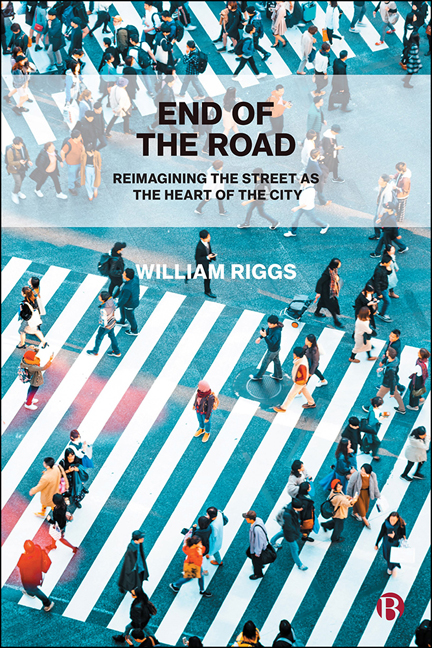Book contents
- Frontmatter
- Dedication
- Contents
- List of Figures and Tables
- Acknowledgments
- 1 Introduction
- 2 A Recent History of the Street
- 3 The Street for Transport
- 4 The Street as Economic Space
- 5 The Street as Social Space
- 6 The Street as Cultural Space
- 7 The Street as a Natural Space
- 8 Challenges to Ending the Road
- 9 Beyond Streets: Integrating Behavior
- 10 A Window into the Future: New Vehicles, New Streets
- 11 A Call to Action: Streets as the Heart of the City
- Appendix
- Notes
- References
- Index
7 - The Street as a Natural Space
Published online by Cambridge University Press: 12 October 2022
- Frontmatter
- Dedication
- Contents
- List of Figures and Tables
- Acknowledgments
- 1 Introduction
- 2 A Recent History of the Street
- 3 The Street for Transport
- 4 The Street as Economic Space
- 5 The Street as Social Space
- 6 The Street as Cultural Space
- 7 The Street as a Natural Space
- 8 Challenges to Ending the Road
- 9 Beyond Streets: Integrating Behavior
- 10 A Window into the Future: New Vehicles, New Streets
- 11 A Call to Action: Streets as the Heart of the City
- Appendix
- Notes
- References
- Index
Summary
I sum up that in 50 years nobody has systematically looked after a good urban habitat for Homo sapiens. We have written very few books about it. There’s been very little research done. We definitely know more about good habitats for mountain gorillas, Siberian tigers, or panda bears than we do know about a good urban habitat for Homo sapiens. (Jan Gehl in ASLA, 2021)
Streets should be for people. But as illustrated in the introductory quote from Jan Gehl, streets can support and enhance the human condition as well as the broader urban ecosystem. Roadways need not be limited to the transport, cultural and social aspects of the city. They can also be a part of the natural experience.
This idea is not new. It has a lot of connection to some of the original thinking from many of the individuals we discussed earlier in this book, from Jacob Riis to Ebenezer Howard. And new scientific studies are telling us how many of the places where we have engineered greenery out of our buildings and cities (something that became particularly acute in some 1960s brutalist architecture) is unhealthy.
In 2001, a story about noted psychologist couple Steve and Rachel Kaplan appeared in the Monitor on Psychology (Clay, 2001). The article entitled “Green is Good For You” was a story about the husband-and-wife team’s research into the restorative properties of nature. While both Steve and Rachel had done significant research on the topic, they did not realize the strong personal implications of their work until Rachel, a professor of psychology at the University of Michigan, switched to a new office.
While her old office had looked out onto a “barren courtyard,” the new one offered a “tree-top view with lush green trees, birds and squirrels (Clay, 2001).” Despite the convincing nature of her own research Kaplan, was surprised at how good she felt in her new office. “My previous office was harder on me than I realized,” she said. “I have to admit I was more convinced of my own work after I changed offices. I realized that all of our results were right.”
- Type
- Chapter
- Information
- End of the RoadReimagining the Street as the Heart of the City, pp. 89 - 97Publisher: Bristol University PressPrint publication year: 2022



